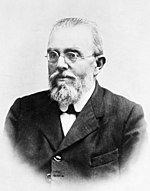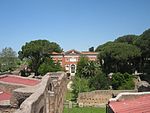Fiumicino Aeroporto railway station

Fiumicino Aeroporto railway station, or Fiumicino Airport railway station (Italian: Stazione di Fiumicino Aeroporto), is sited within the Leonardo da Vinci-Fiumicino Airport (Italian: Aeroporto Leonardo da Vinci di Fiumicino) (IATA code: FCO) in Fiumicino, Lazio, central Italy. Opened in 1990, the station is the southwestern terminus of the Rome–Fiumicino railway. The airport and station are also known as Rome-Fiumicino Airport (Italian: Aeroporto di Roma-Fiumicino), because the airport is the main airport for Rome. The station is managed by Rete Ferroviaria Italiana (RFI). Train services are operated by Trenitalia. Each company is a subsidiary of Ferrovie dello Stato (FS), Italy's state-owned rail company. RFI classifies the station as category "Gold".
Excerpt from the Wikipedia article Fiumicino Aeroporto railway station (License: CC BY-SA 3.0, Authors, Images).Fiumicino Aeroporto railway station
Via Leonardo da Vinci,
Geographical coordinates (GPS) Address Nearby Places Show on map
Geographical coordinates (GPS)
| Latitude | Longitude |
|---|---|
| N 41.794166666667 ° | E 12.251111111111 ° |
Address
Display
Via Leonardo da Vinci
00054
Lazio, Italy
Open on Google Maps









